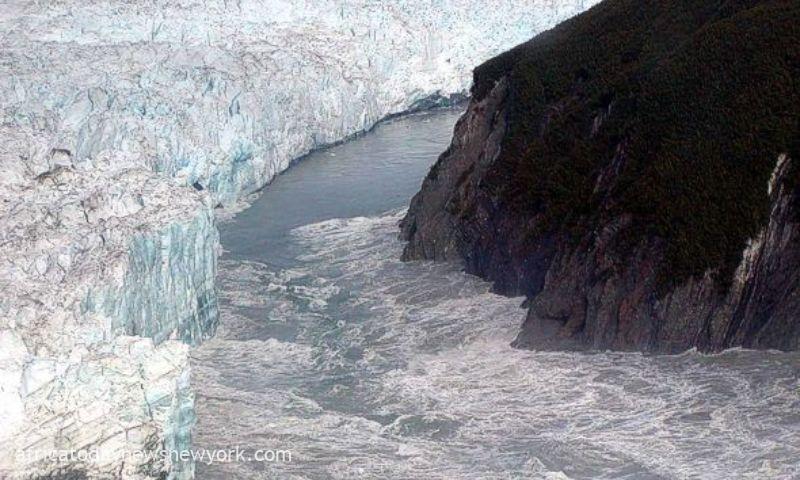The number of casualties linked to a destructive glacial lake rupture, leading to a sudden and intense flood in India, has climbed to at least 10, as per official statements, with 82 individuals yet to be located.
With global temperatures on the rise and ice melting, the heightened frequency of violent flooding from glacier lakes obstructed by loose rock is raising concerns among climate scientists. They are now warning of an expanding peril across the extensive Himalayan mountain range.
‘Floodwaters have caused havoc in four districts of the state, sweeping away people, roads, and bridges,’ Himanshu Tiwari, an Indian Army spokesman, told AFP on Thursday, speaking a day after the wall of water rushed down the mountainous valley in northeast Sikkim state.
Authorities said roads had been ‘severely’ destroyed and that 14 bridges had been washed away.
‘Ten bodies have been recovered so far, and 82 people are missing, including army personnel,’ Sikkim state chief secretary Vijay Bhushan Pathak told reporters late Wednesday.
The army has confirmed that 22 soldiers are included in the list of those who are still missing, with one soldier, previously reported as missing, now found and rescued.
Following a period of heavy rain, the high-altitude Lhonak Lake, nestled at the bottom of a glacier in the towering peaks that encircle the world’s third-highest mountain, Kangchenjunga, experienced a surge in water levels.
Read also: Sikh Separatist Dispute: India Stops Canada Visa Services
Propelled by the force of the monsoon rains, the wall of water surged downstream, compounding the swelling of an already surging river. In its wake, it caused damage to a dam, swept away houses and bridges, and left a trail of “substantial devastation,” according to the Sikkim state government.
Damage, as documented, has stretched more than 120 kilometers (75 miles) downstream. Prime Minister Narendra Modi has pledged unwavering support for those who have been affected.
Satellite photographs released by the Indian Space Research Organisation illustrate that Lhonak Lake has contracted by approximately two-thirds in size, which equates to an area roughly the size of 150 football fields or 105 hectares.
According to research conducted by the International Centre for Integrated Mountain Development (ICIMOD), Himalayan glaciers are melting at an accelerated pace due to climate change, placing communities at risk of unforeseeable and costly disasters.
‘Intense rain has led to this catastrophic situation in Sikkim, where the rain has triggered a glacial lake outburst flood, damaged a dam, and caused loss of life’, said Miriam Jackson, a scientist specialising in ice who monitors Himalayan regions with the Nepal-based ICIMOD.
‘We observe that such extreme events increase in frequency as the climate continues to warm and takes us into unknown territory.’
High-mountain regions across the world have warmed at twice the pace of the Earth’s overall average surface temperature, as stated by climate scientists. The global average surface temperature has increased by nearly 1.2 degrees Celsius since preindustrial times.
Sikkim, situated near India’s borders with Nepal and China, is home to a heavy military presence.
India has exercised caution in response to China’s growing military assertiveness, and their extensive 3,500-kilometer (2,200-mile) shared border has been a persistent point of tension, including disputes over territory in Sikkim.
